Seminars
June 14 th and 15 th
Click image for enlargement.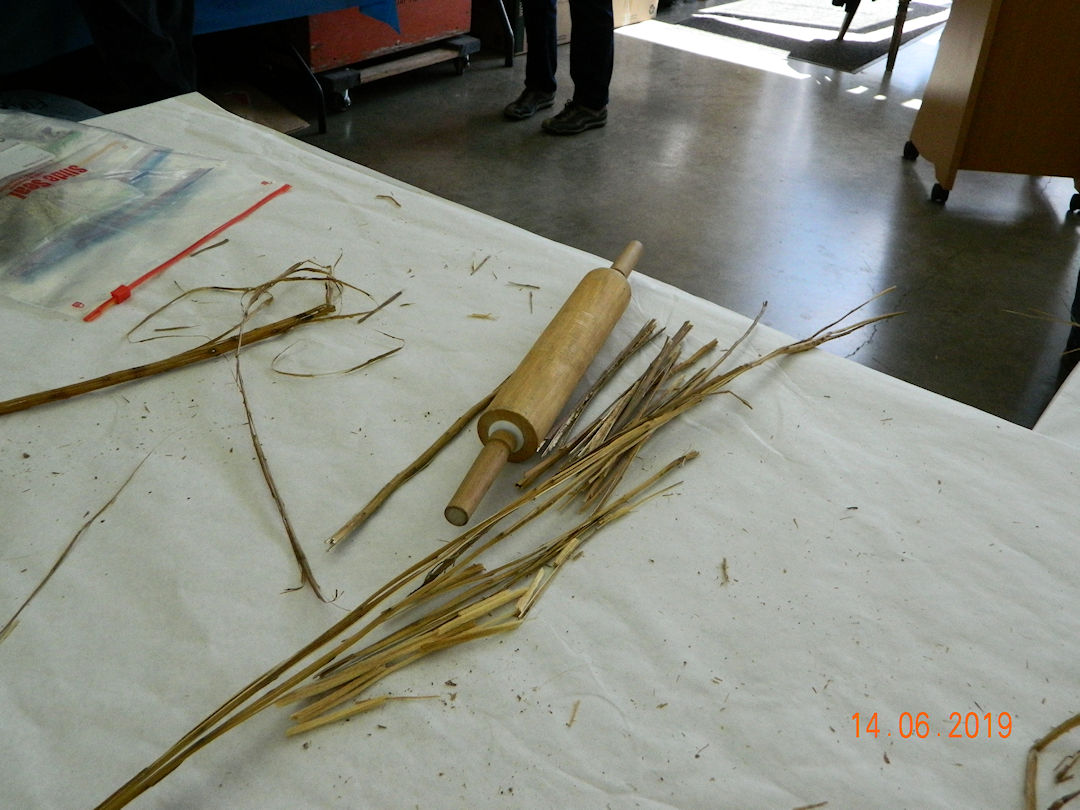
My first seminar was "Weaving TnT: Dynamite Tips n' Techniques for Every Weave" by Robyn Spady. It was a very interesting talk with a handout full of good ideas but I took no pictures.
On this page are two seminars by Sue Perron. In the first, "Fibres on the Wild side", we learned about using both wild and domesticated plants for fibre for weaving and basket making. Here I was using a rolling pin to break the outer fibres of dried fireweed and get at the long fine fibres inside.
(14:06:2019)
Dry fireweed at the right, green fireweed, tarragon and hemp top to bottom at the left.
(14:06:2019)
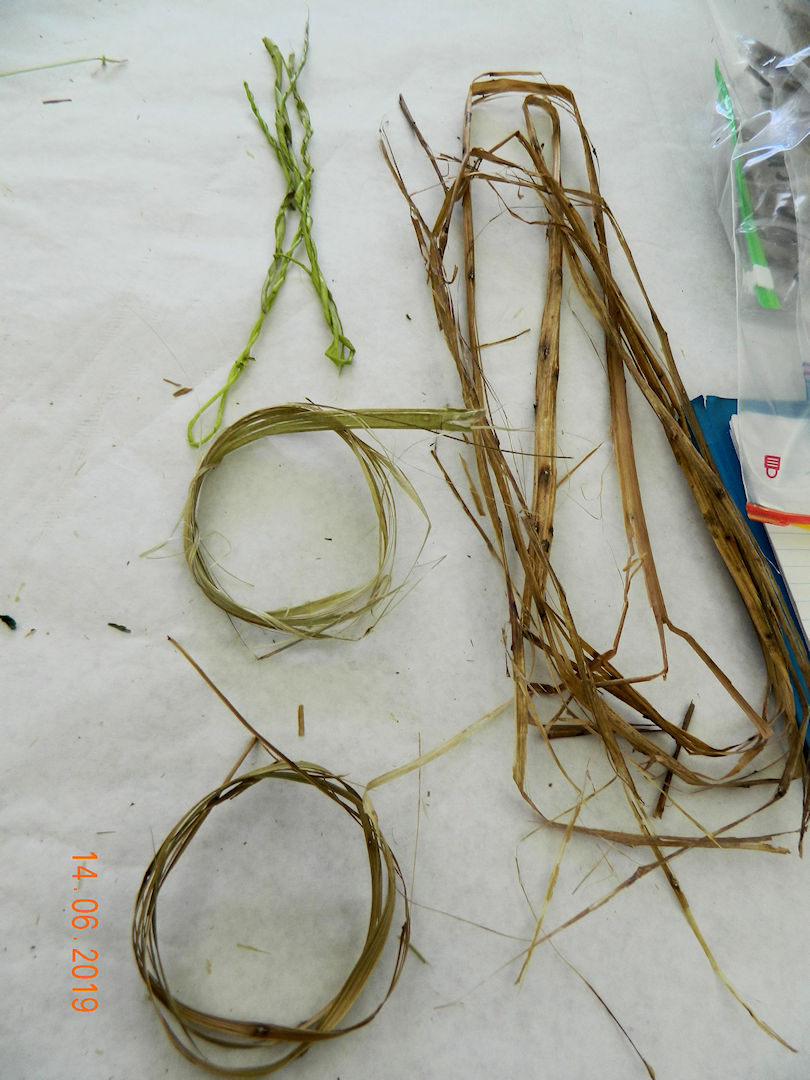
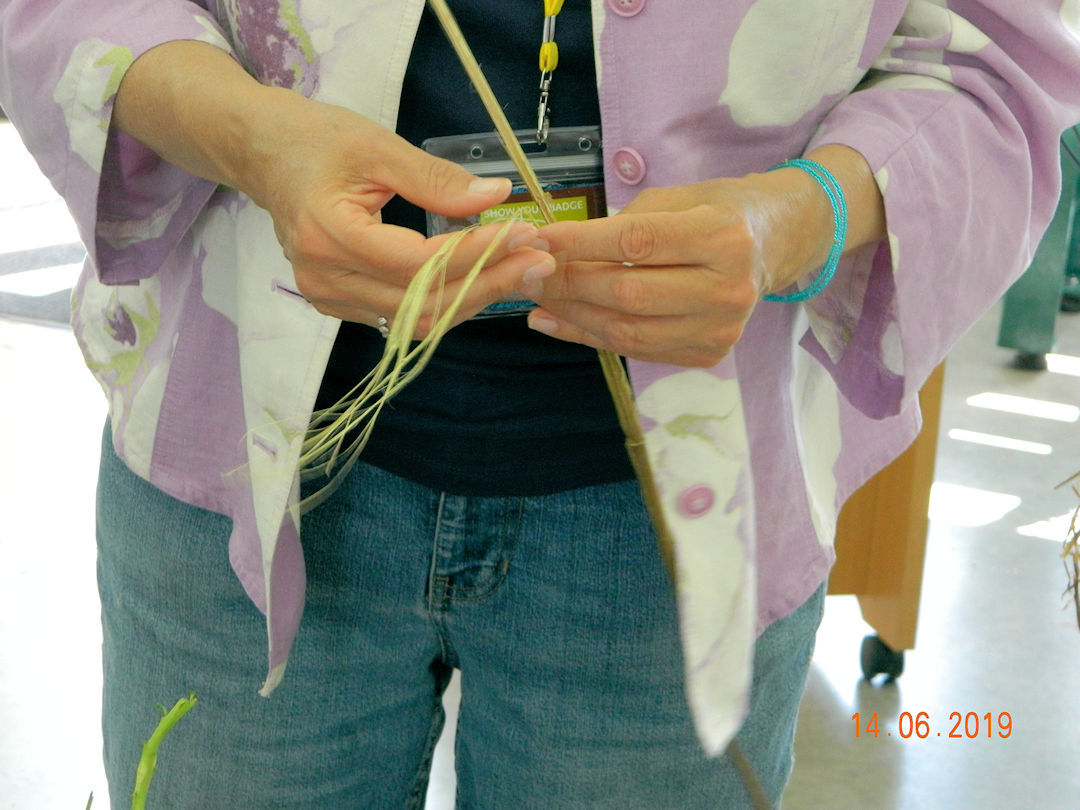
(14:06:2019)
Fresh and dried fireweed, flax and some other plants for fibre.
(14:06:2019)
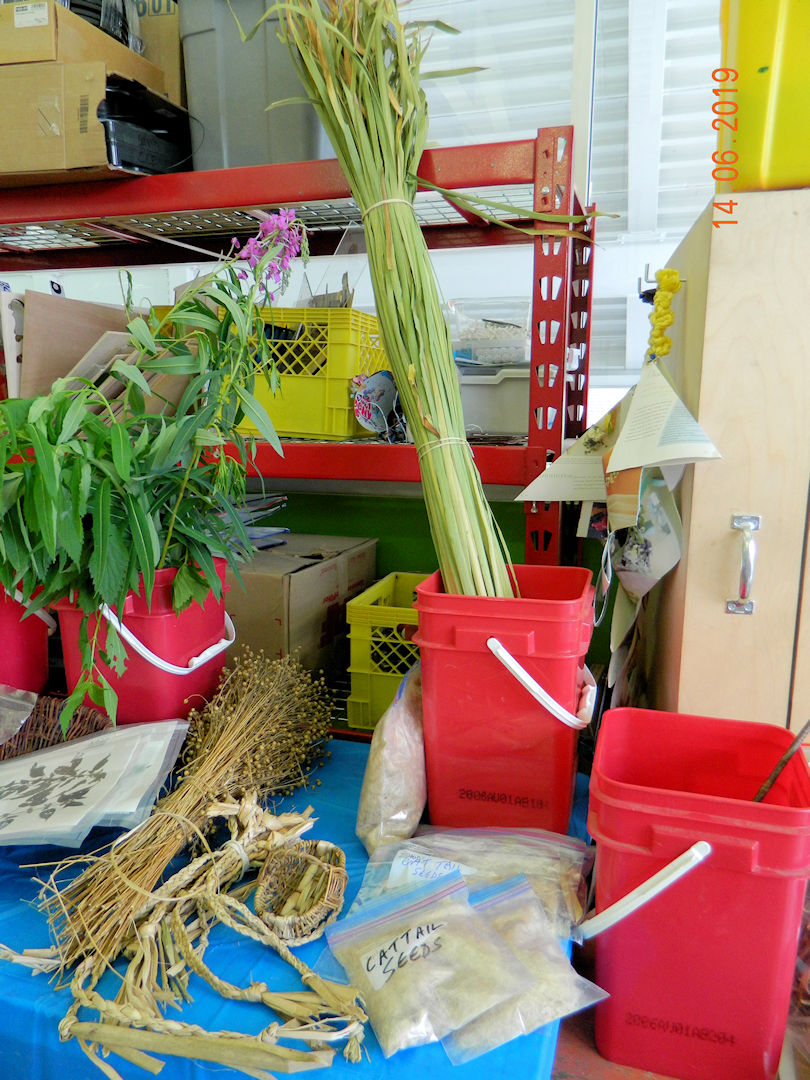
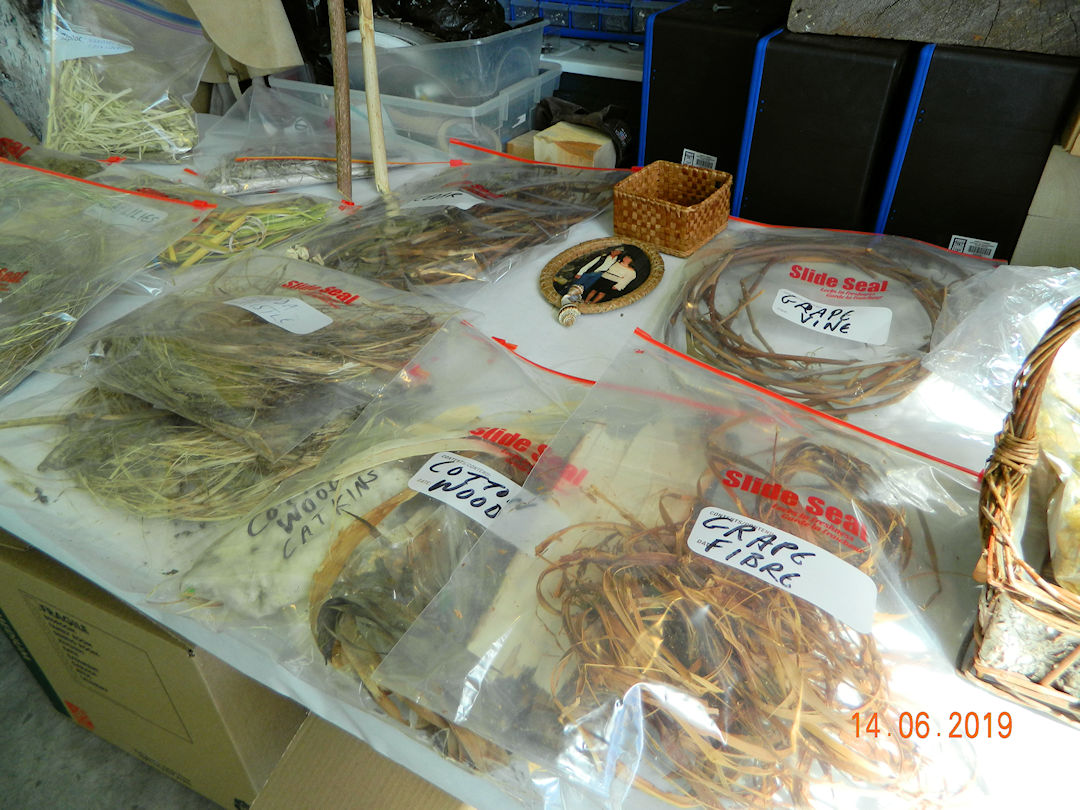
(14:06:2019)
The second seminar by Sue Perron was titled "Cienture Fleche: a Brief Walk Though History.
We learned about the history of the sashes worn by the fur traders and the Metis people of Canada and the USA.
Then we learned a bit about how they are made. Here is my beginning attempt at making a small finger woven band.
(15:06:2019)
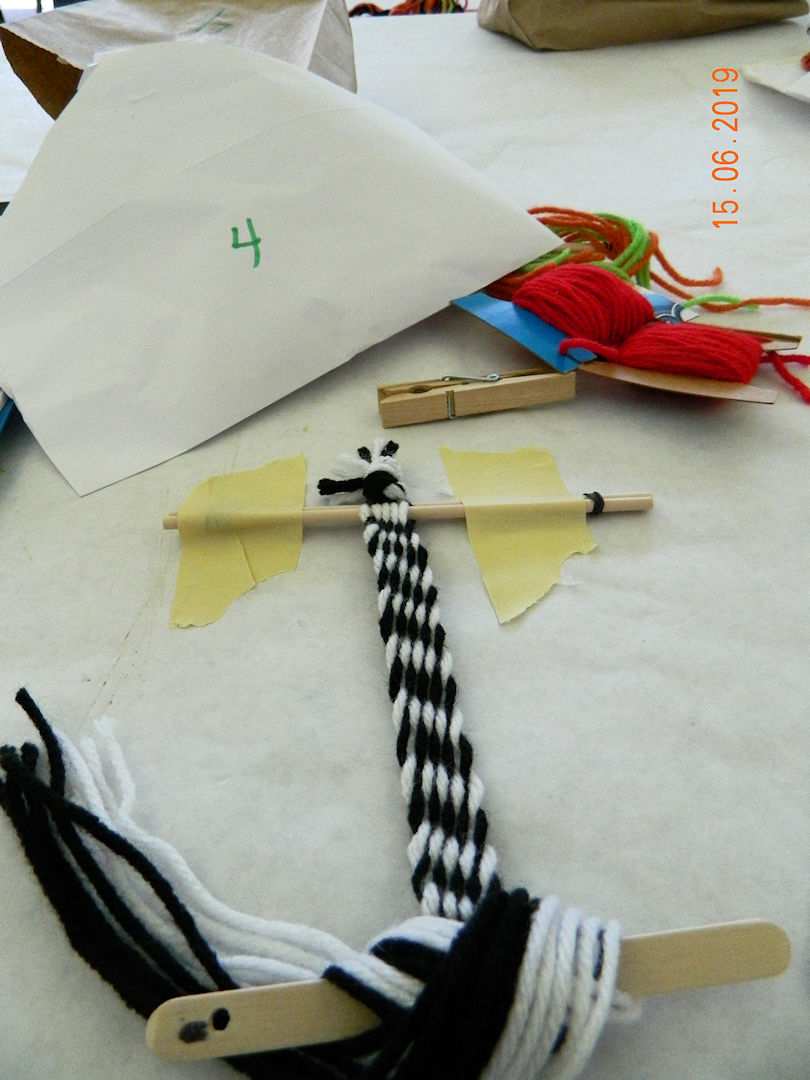
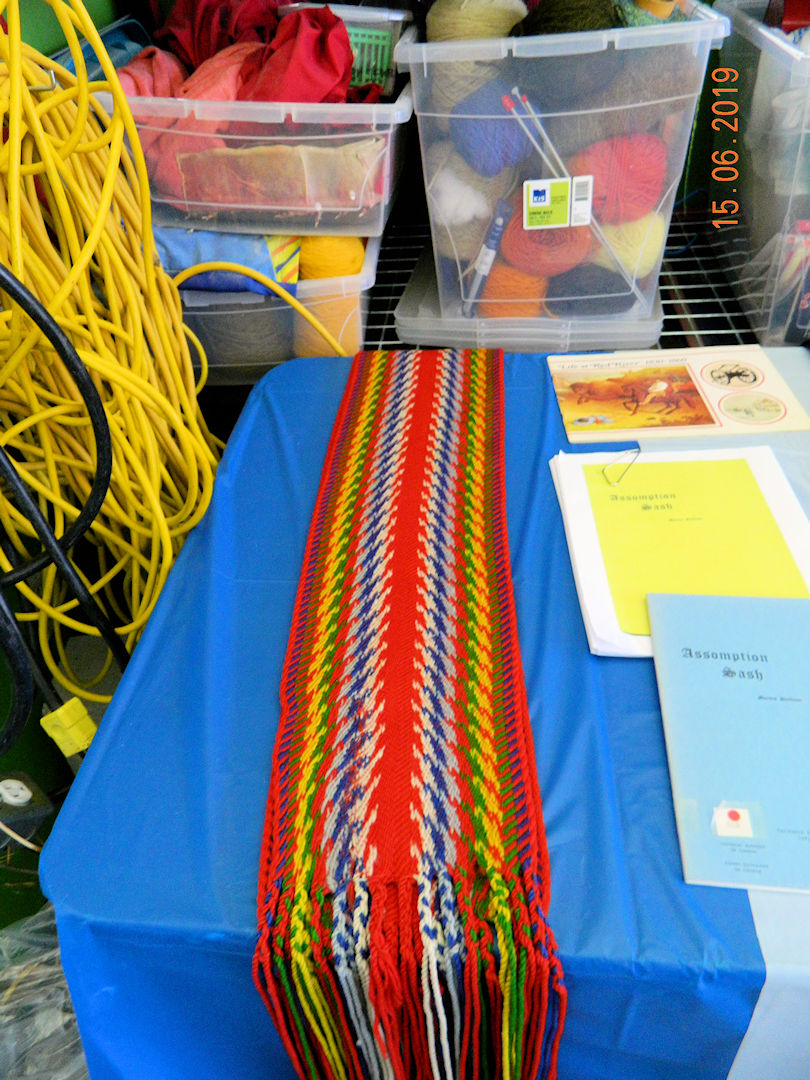
When the makers asked for more money the Hudson's Bay company instead had loom woven copies made by white people in Quebec and Coventry, England.
This is a loom woven copy of an Assomption Sash, made in Coventry.
(15:06:2019)
These are finger woven Assomption sashes. Notice the sharper arrows in the sash on the left.
Assomption was an area of Montreal. Sashes were often identified by the place they were made.
(15:06:2019)
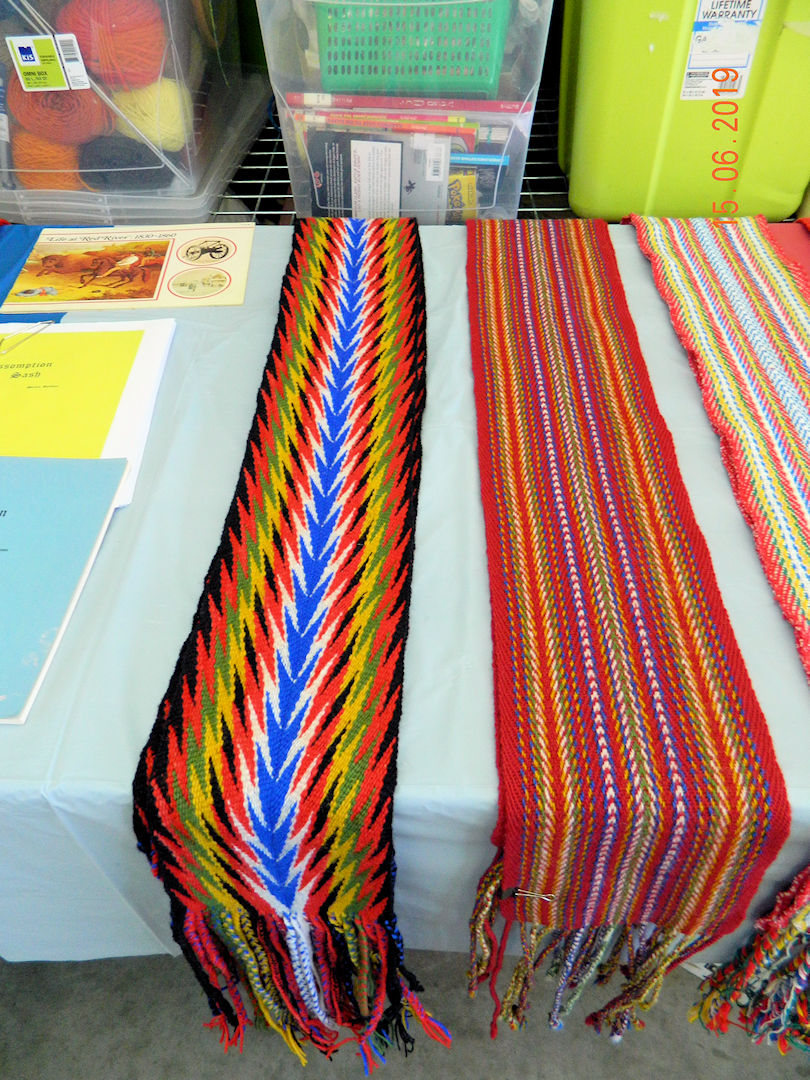
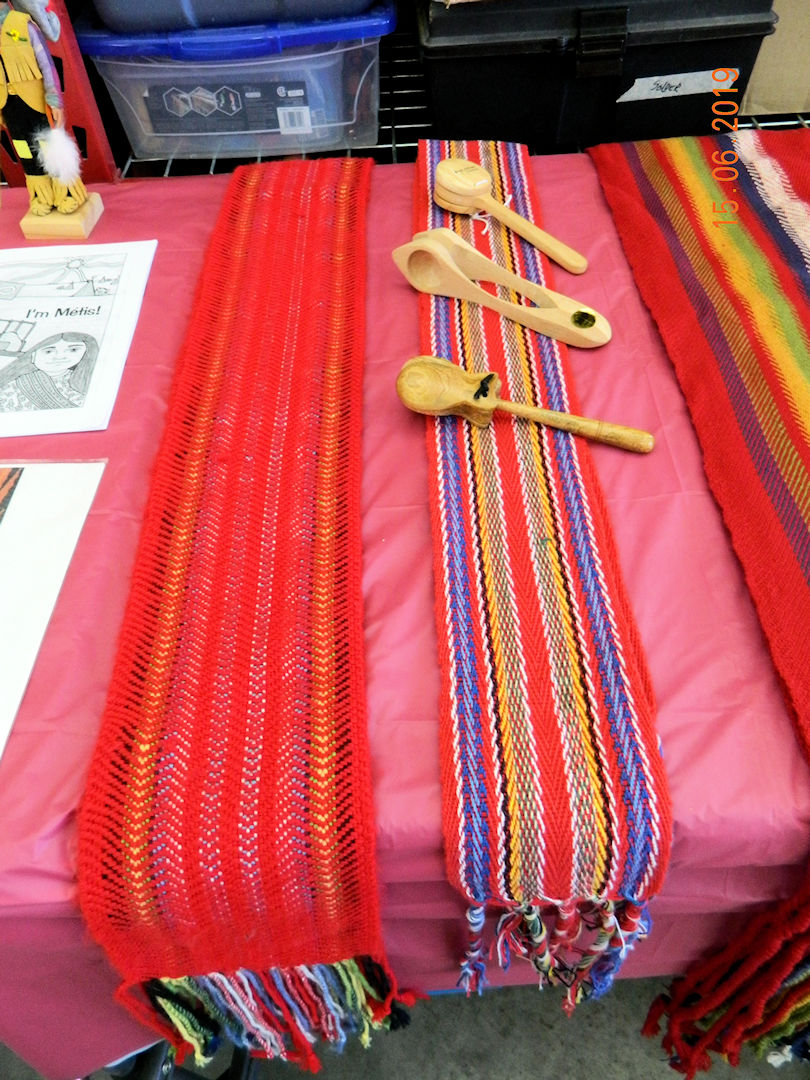
(15:06:2019)
Coats, or Cabots, were made from Hudson's Bay blankets.
(15:06:2019)
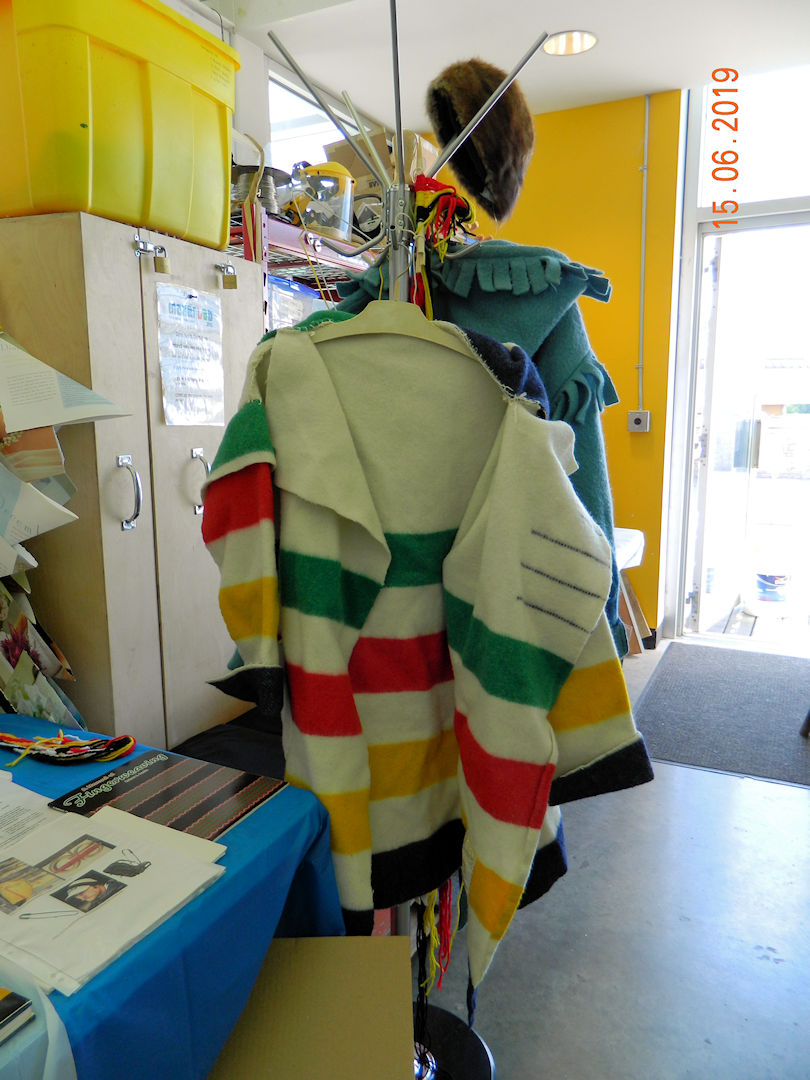
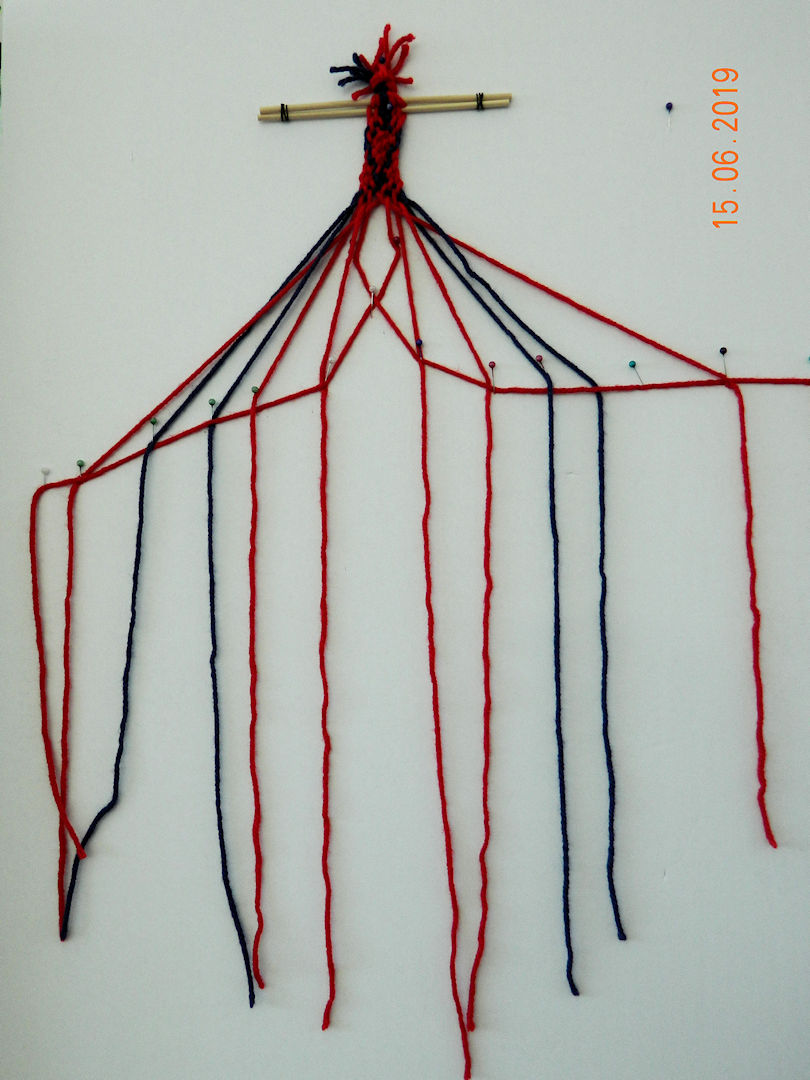
(15:06:2019)
This is the instruction demo for the single direction band like the one I started above.
While learning the basics of how to make these complex sashes we also learned a lot of the history of the Metis in Canada and how they have been treated by both of their ancestral peoples over the years.
(15:06:2019)
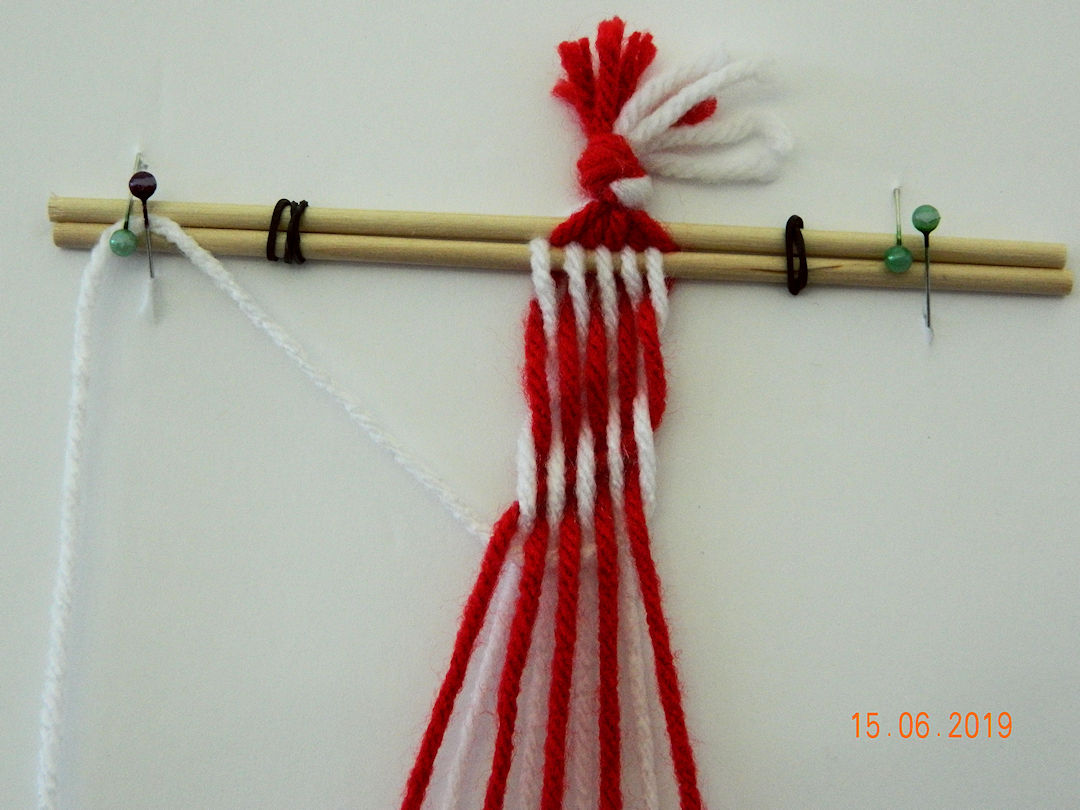
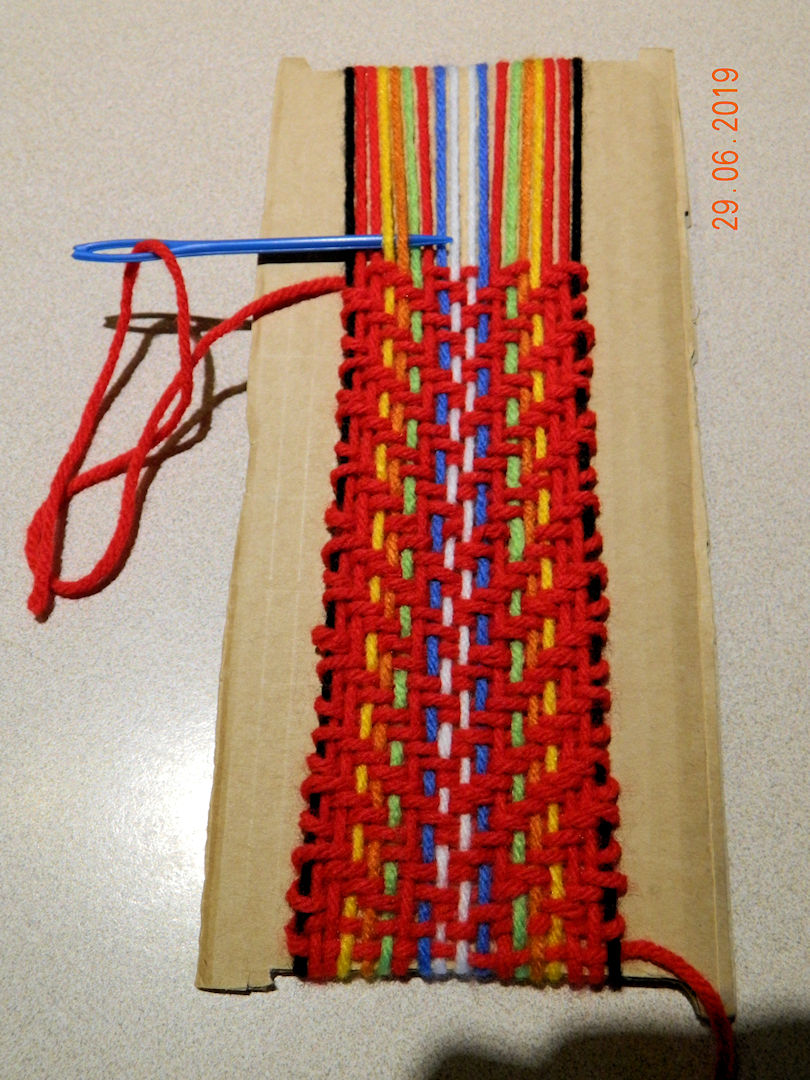
(29:06:2019)
Two finger woven "sashes" on the left and the competed need woven sash on the right.
the black and white one was easy, the orange and green, not so much. It took about 90 minutes to "weave" an 8 inch band. Needle weaving also took a couple of hours. It would definitely be easier on a loom!
(30:06:2019)
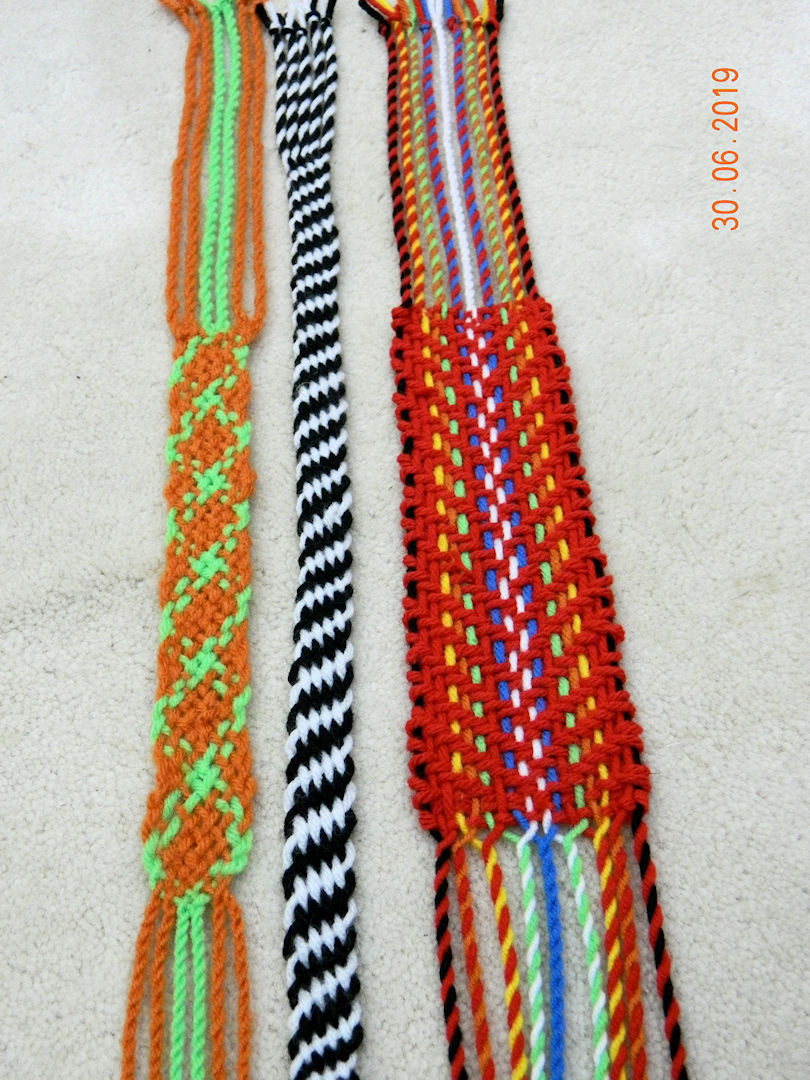
| Click the Home button below to return to the main button menu. |

|